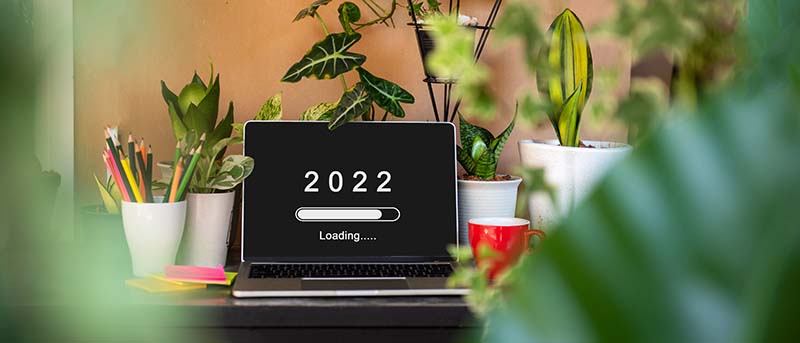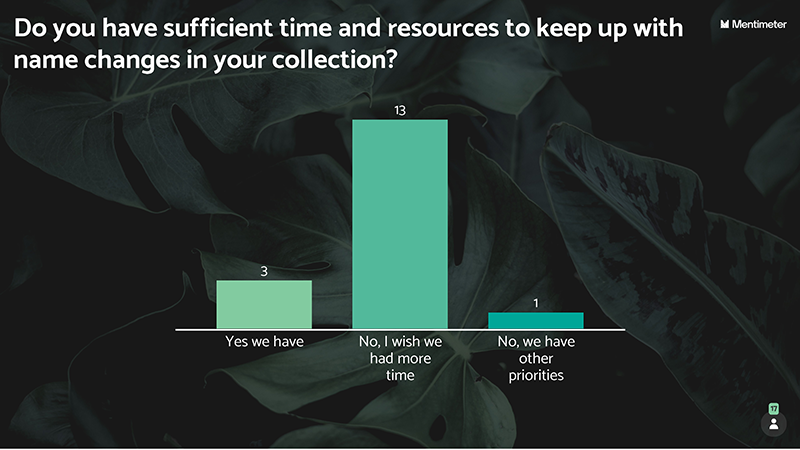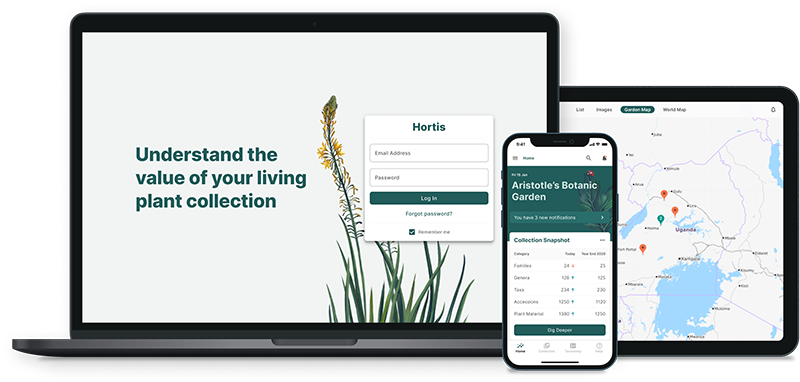As we approach the end of 2021, we would like to take the opportunity to thank all of you who have in some way helped us to better understand the community of botanic gardens. In our quest to improve and make life easier for all of you, your contributions and input are vital for us, so a heartfelt thank you goes out to you all.
Two years have now passed since the collaboration on the IrisBG software package between Botanical Software, Compositae AS and Digital Forvaltning AS ended. Though we are aware that the change was disruptive for many, our motivation two years ago was to improve our ability to respond to the needs of the community of botanic gardens and consequently be able to “provide even better tools and services for you to work with.”

We are very conscious of and grateful for the trust you have placed in us. With over 800 Floria app users, the activity on the app continues to increase and we are investing in the product to help you improve accuracy and efficiency in the garden.
With Botanical Software joining Candide in 2020, we were given the opportunity to look at the more fundamental challenges the community of Botanic Gardens is struggling with. In the latter part of 2020, our research was started with a team under the working title “Rethinking plant records”. This month, we are very proud to have onboarded the first gardens to Hortis. This was celebrated at our final 2021 webinar, titled “Hortis is coming to town”.
Plant Records Webinar – Hortis is coming to town
At the APGA conference last June, we announced Hortis, our next generation plant collection platform. Since then, our team has been busy building the infrastructure for the product and the first users were able to log in earlier this month.
Building a cloud infrastructure allows Hortis to work on all devices and platforms. With access wherever you are, there is more scope for collaboration and data sharing. For more information about how our technology facilitates collaboration, read our previous post here.
Continuous deployment
One of the key issues with traditional software is the cost and hassle of its management. (With traditional, we mean software that you install yourself at your own premises). In contrast to on-premise installation, cloud-based deployment happens seamlessly without any disruption to the users. With Hortis, our engineers can deploy changes several times a day without requiring any involvement on your part. In fact, a global deployment takes only a few minutes to complete!
This allows us to respond more quickly to people’s requirements and to add capabilities as we progress. It also means you always have the latest version of the product every time you use it.
Compared with on-premise software, cloud-based applications offer a more predictable, stress free and cost efficent environment, which will in turn provide you with more time and resources to focus on your main objectives as a botanic garden.
“Customers can spend up to four times the cost of their software license per year to own and manage their applications.”
Gartner Inc., “The End of Software”

Shared Taxonomy
Carolus Linneaus, the founder of modern taxonomy, introduced the world to binomial nomenclature, which is now a well established convention in our community. One revolutionary benefit of his approach is the ability for botanists around the world to share knowledge about what they agree is the same plant. However, agreement on plant names is still of great concern for many. The proliferation of synonyms, the desire to “lump” and “split” taxa and more recently, the introduction of molecular taxonomy, have made it very difficult for botanic gardens to keep up. As a consequence, the approach Carl Linneaus introduced has yet to reach its full potential. With Hortis, our goal is to make it easy for gardens to maintain quality taxonomic data with little effort, which is the foundation for friction free collaboration.

Integrating Hortis with a well-maintained and established taxonomic backbone will make it easier for you to manage your plant names. This will allow you to select an accepted name, select what it was received as (which may be different) and define whether or not a different name should be used for printing plant labels.
By keeping track of printed labels, we can then notify you of any changes to the taxonomic backbone, so you can make the decision about what to do.
Hortis is here!

We are delighted that the first gardens started using Hortis earlier this month. Our group of early adopters are members of Botanic Gardens Australia and New Zealand and we will open up for others to join early next year. Although our first release is relatively modest in its capabilities, our ambitions for 2022 and beyond, certainly are not. Sign up for our blog to follow our progress.
There will be opportunities to try Hortis in the early part of 2022, so do get in touch if you would like to learn more.

Wishing all our community members a wonderful festive season and look forward to working with you in 2022.
We very much appreciate your continued support.
Warmest wishes from the Hortis team: Havard, Waheed, Dave, JP, Will, Miles, Anthony, Margherita, Jose, Myrna and all our colleagues at Candide.
